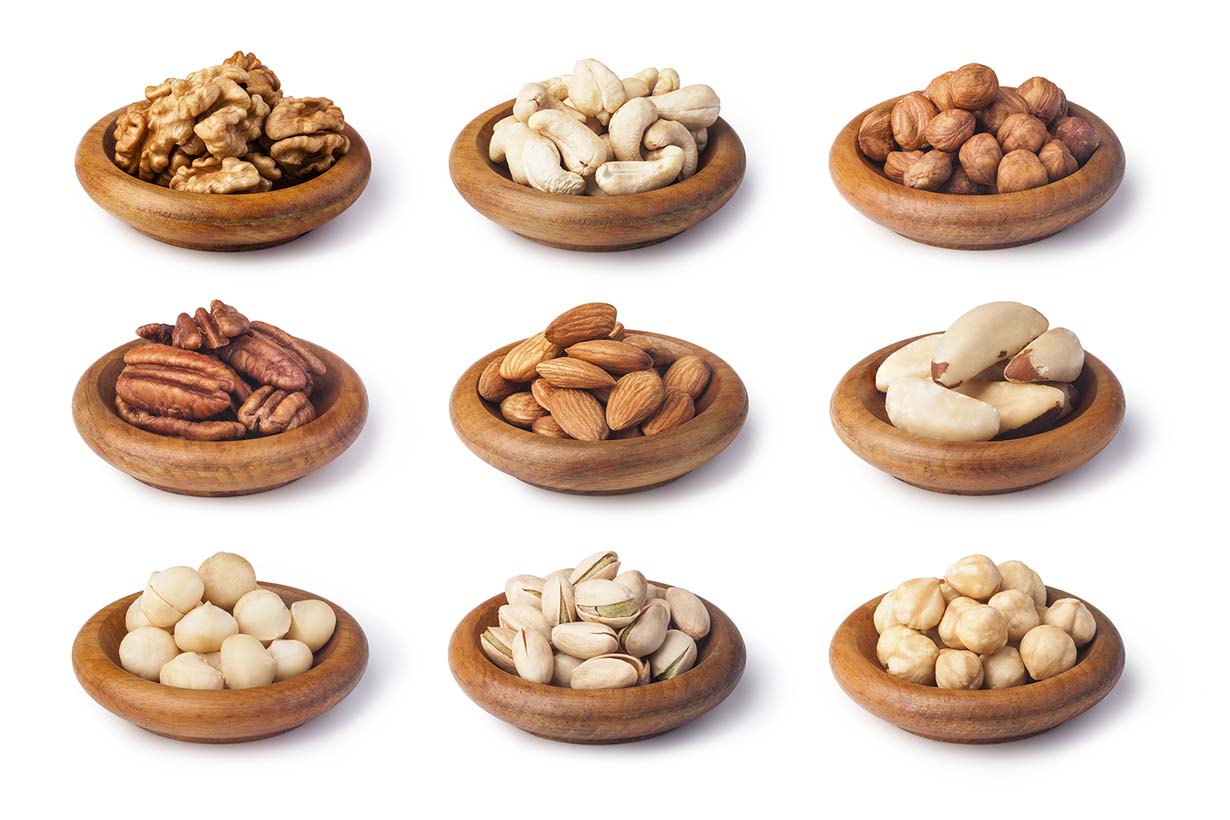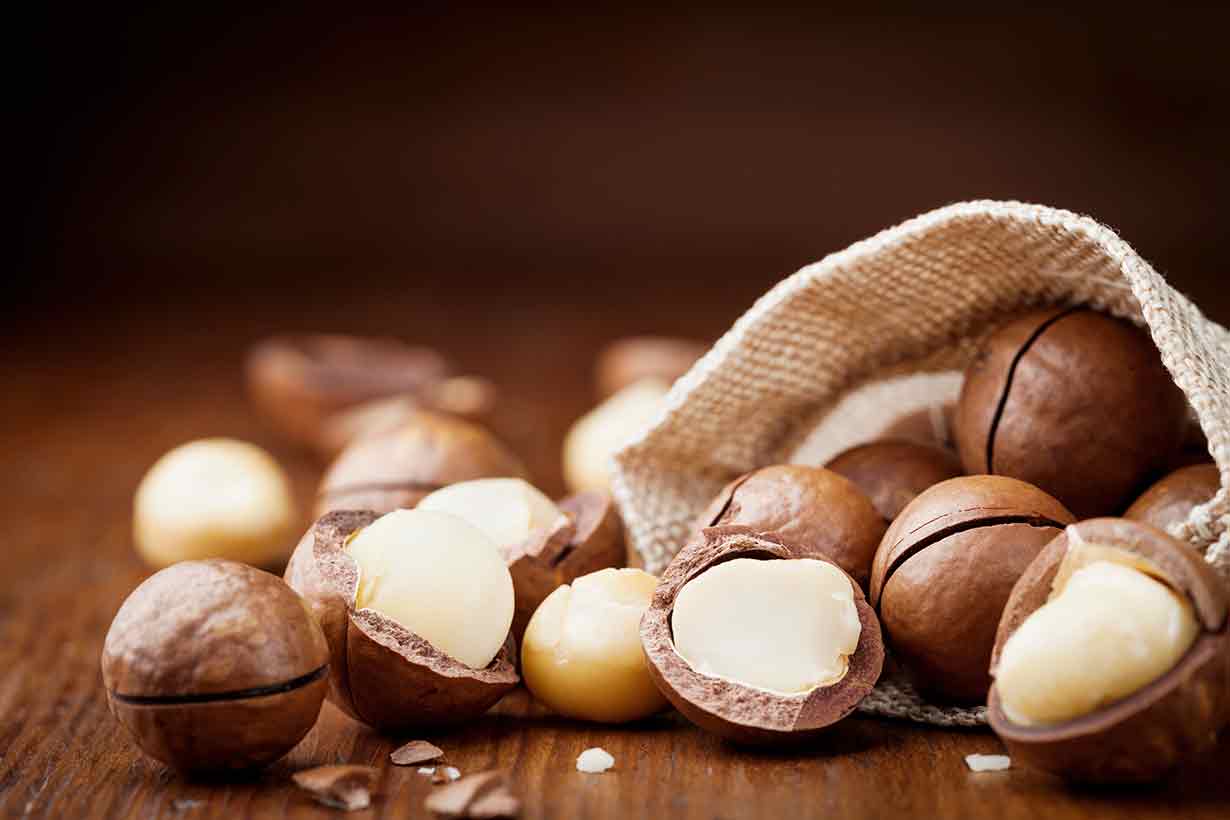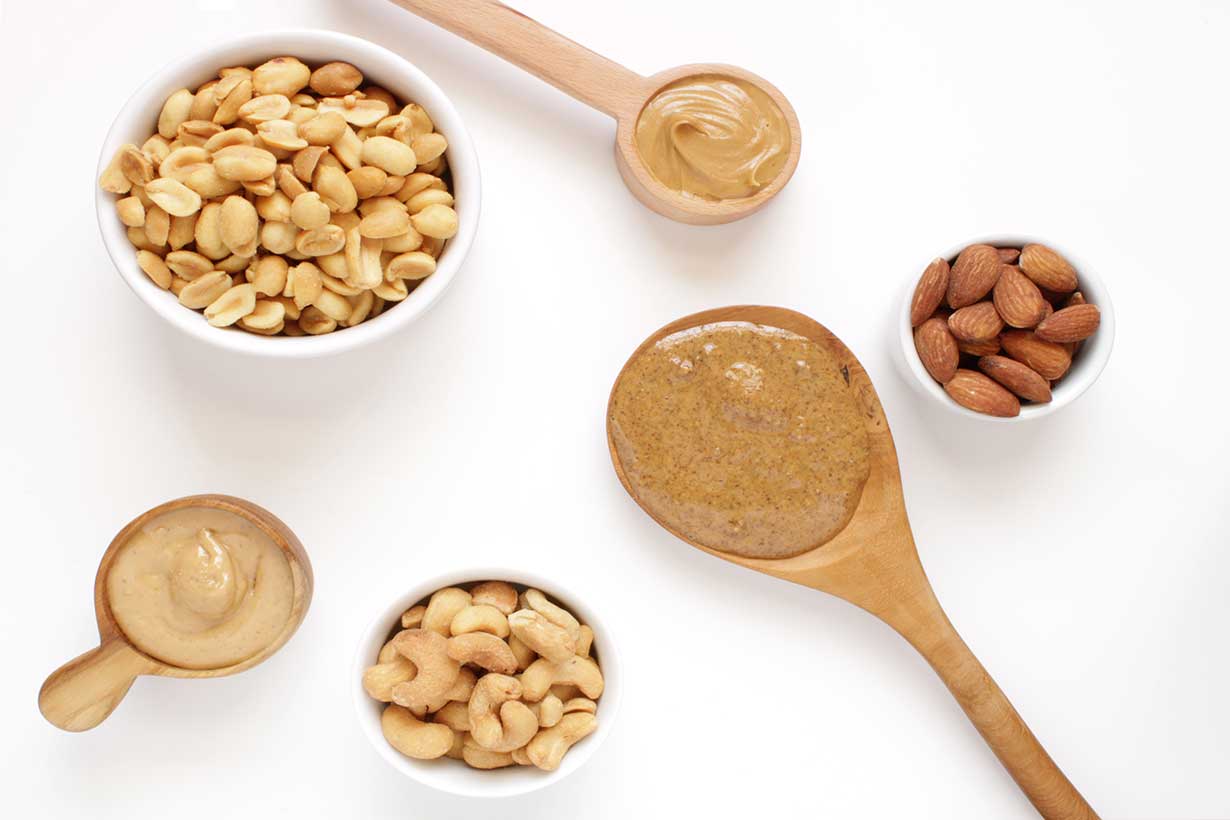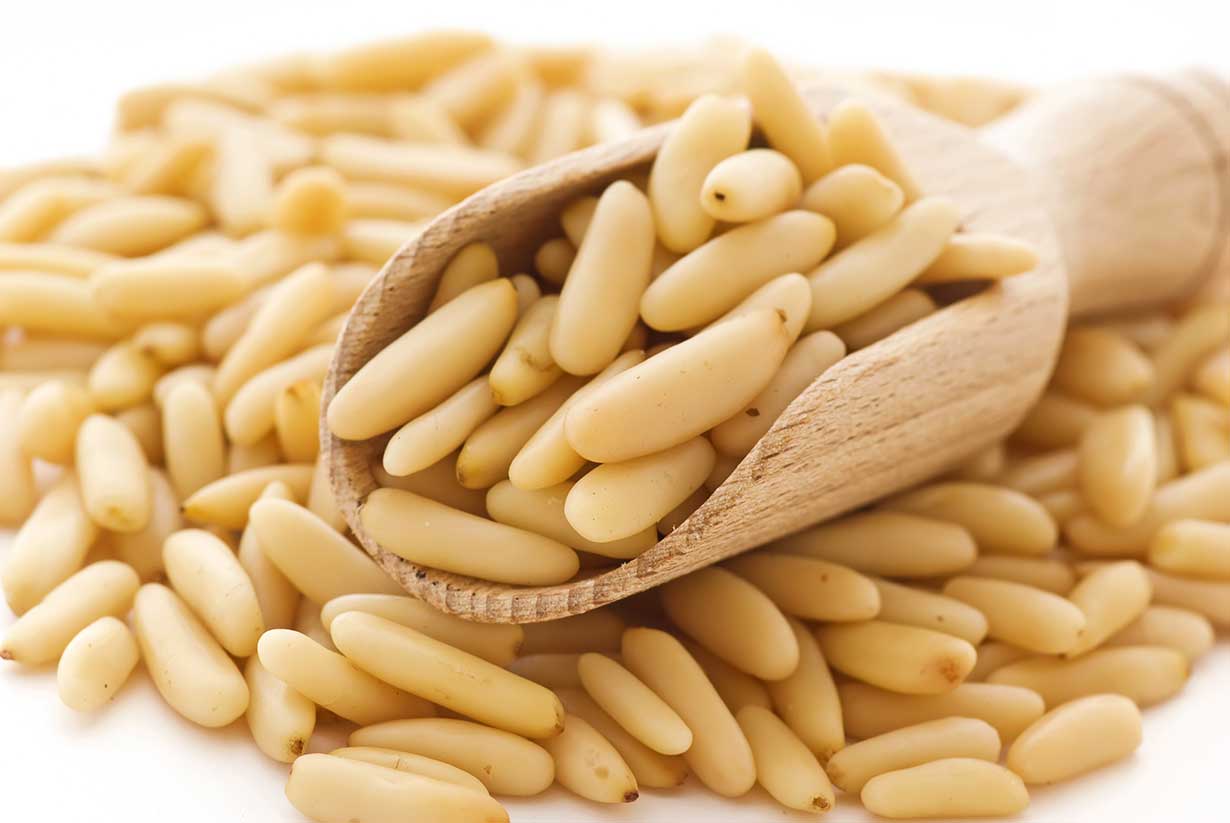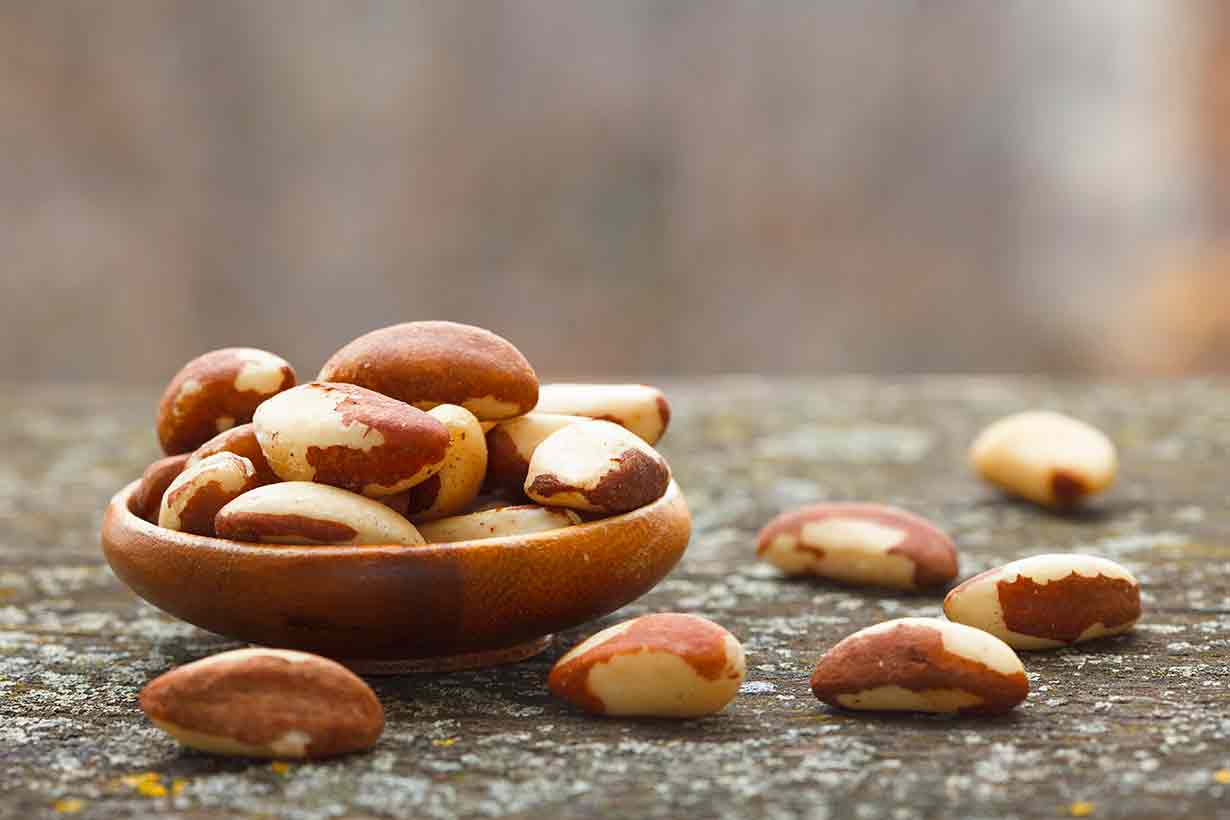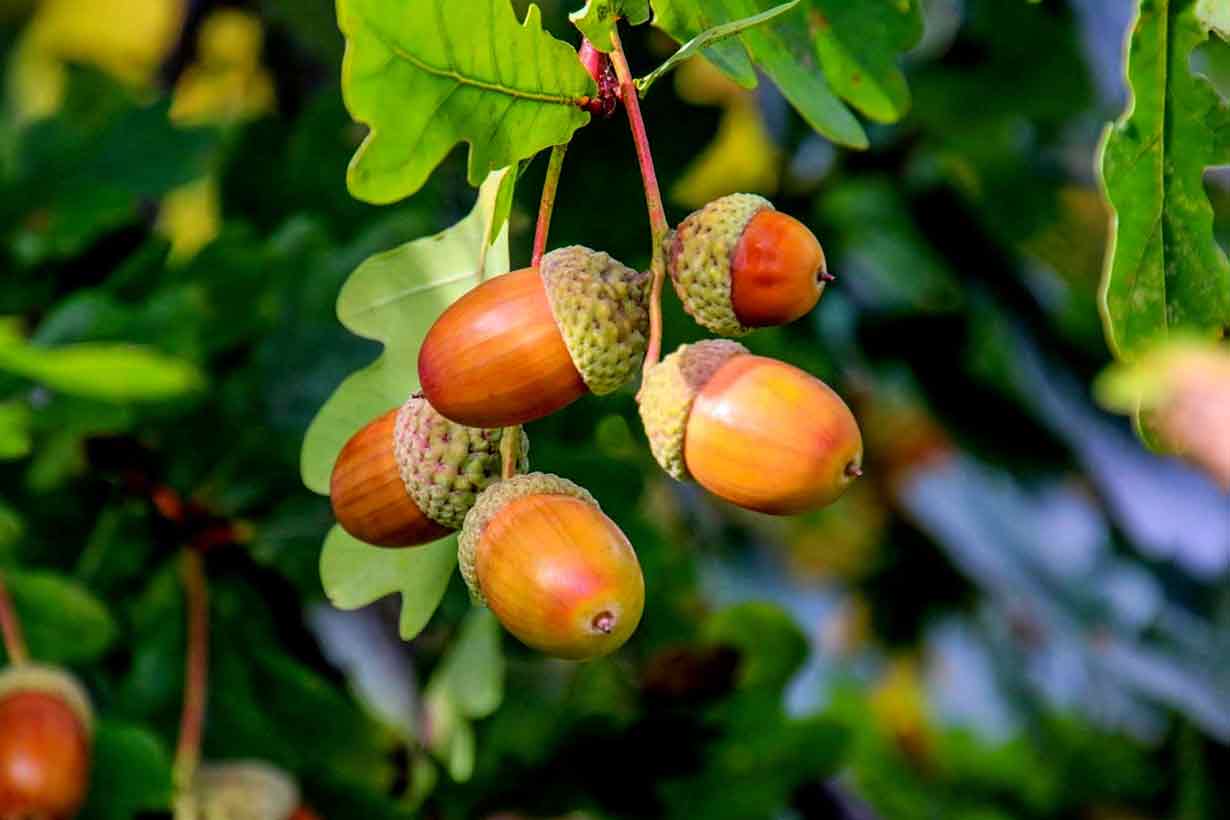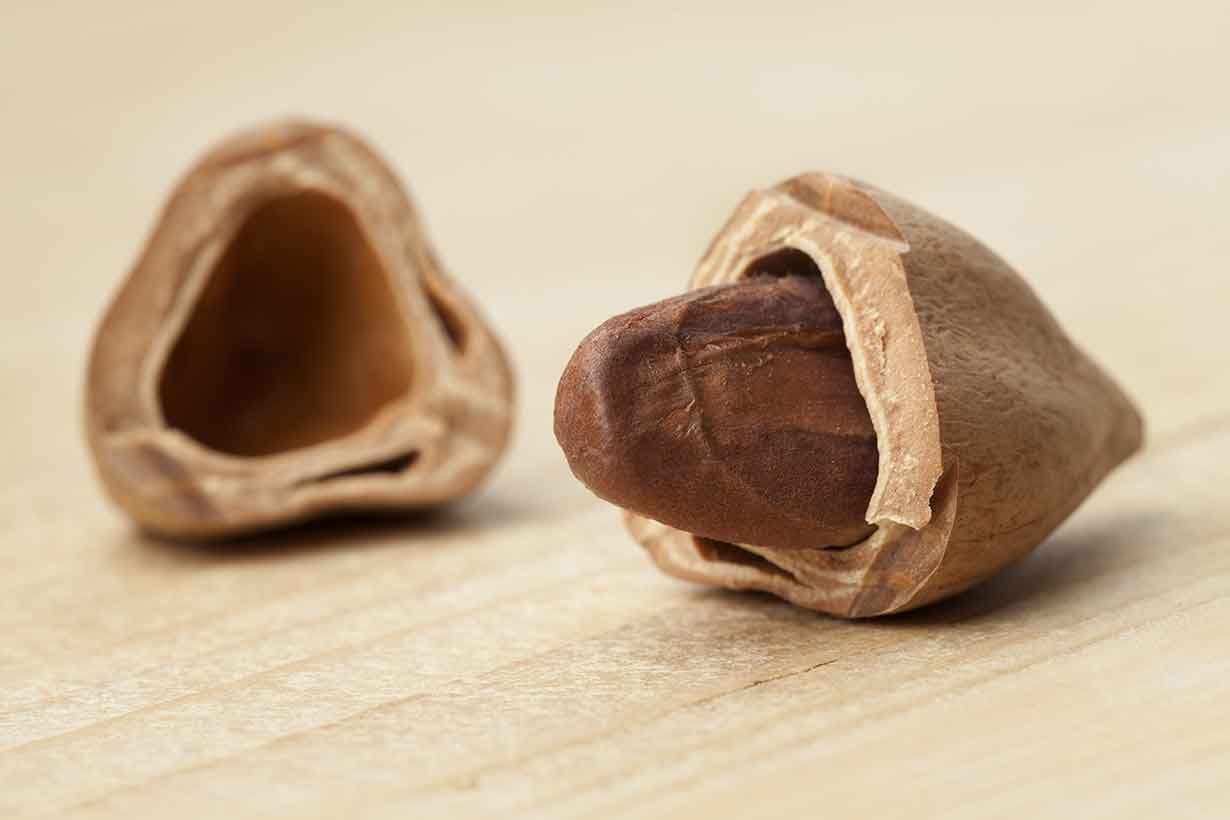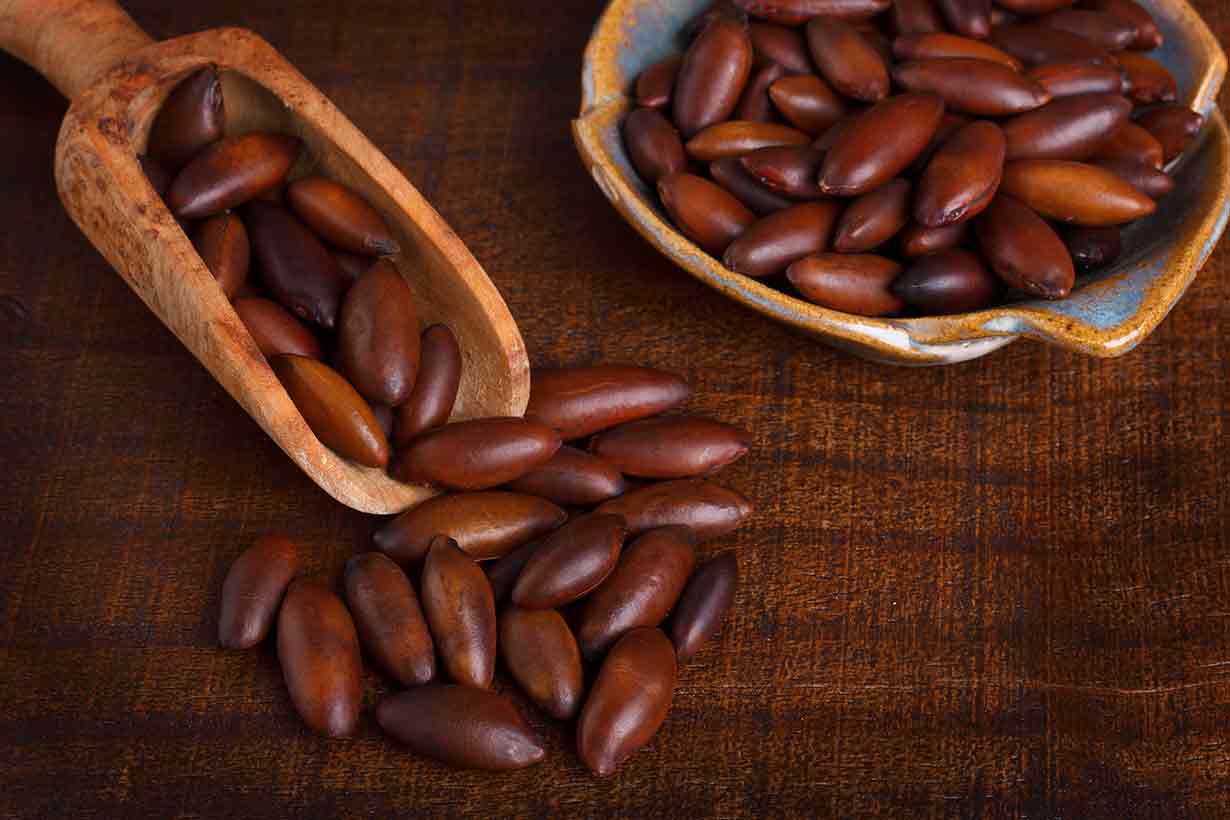Hickory nuts are among the lesser-known varieties of edible nuts, but they taste great and provide a lot of nutritional value.
This article explains what hickory nuts are, what they offer nutritionally, and where to find them.
What Are Hickory Nuts?
Hickory nuts grow on the Hickory tree, which is shown in the above image. The Hickory tree is native to China, India, and Central and North America (1).
On this note, there are several different species of Hickory tree, and not all of them produce edible nuts. The most common is known as the Shagbark Hickory, which is pictured below:

Hickory nuts grow encased within a green outer husk, which slowly turns yellow and then browns as it ripens.
Upon maturity, which occurs in the Fall/Autumn season, the husks will start falling from the trees, particularly on stormy days. These husks can then be cracked open to gather the nut inside.
Types of Hickory Nuts
While the Shagbark Hickory tree produces good quality edible nuts, nuts from other Hickory species (such as the Bitternut Hickory) can be very bitter.
Here are the different varieties of hickory nuts:
- Bitternut
- Mockernut hickory
- Pignut
- Red hickory
- Sand hickory
- Shagbark
- Shellbark
There is an excellent WikiHow guide on identifying the different species of Hickory trees and nuts available here.
What Do They Look Like?
Hickory nuts from the Shagbark Hickory tree, the most common species, have a plum-sized outer husk. Once the husk is open, we can find a shelled nut inside.
The shelled nuts have a hard surface, and their color may range from a light beige color to brown.
Here is an example of what they look like:
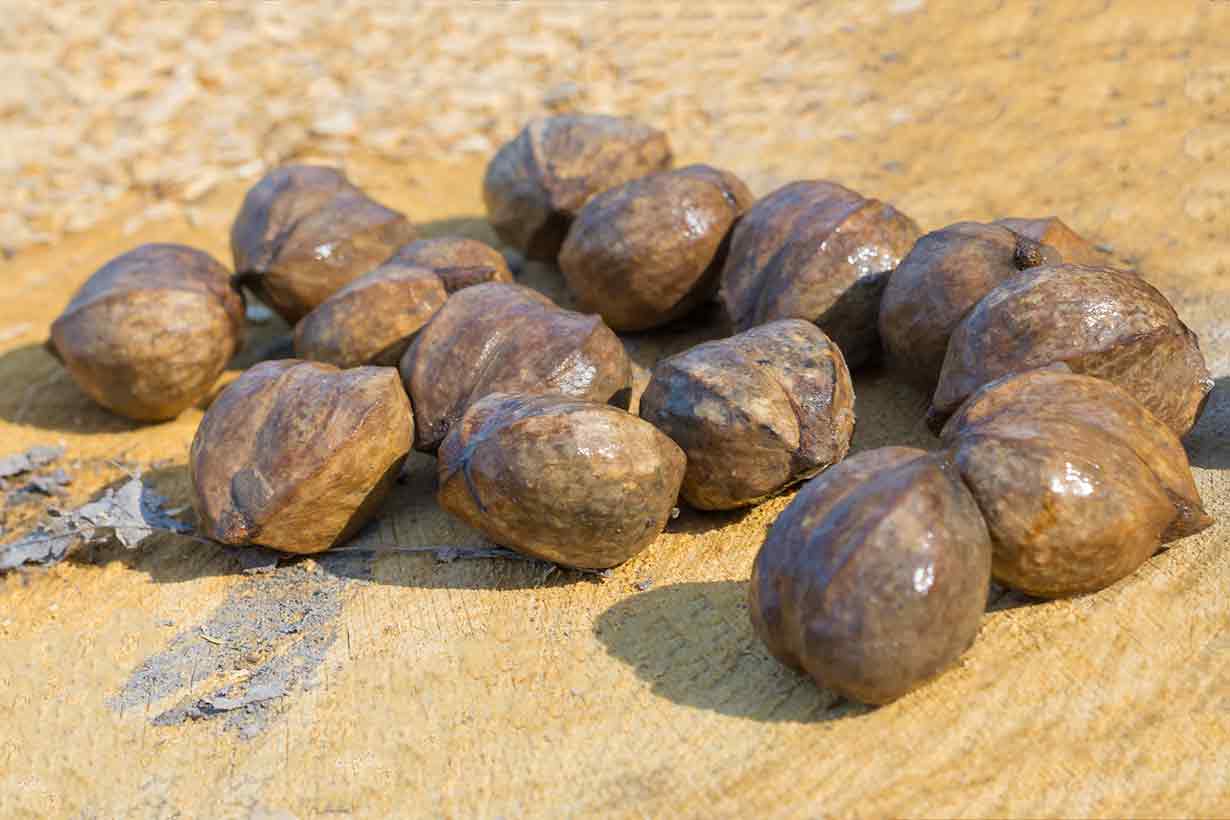
These shells need cracking open, which can be done using anything that exerts a force.
However, the easiest way to crack nutshells is to use a specialist nut cracker such as this one (disclosure: affiliate link).
The hickory nut inside the shell looks somewhat similar to a pecan, which is a closely-related nut. The two also share a similar mildly sweet taste.
Taste
As mentioned above, hickory nuts have a slight sweetness and an overall nutty flavor.
The nuts have a crunchy exterior and an oily texture due to their high fat content.
Nutrition Facts
What do hickory nuts offer nutritionally?
Based on data from the NCC Food and Nutrient Database (NCCDB), here are the nutritional values per ounce (28-gram) serving of hickory nuts (2).
The daily values for each vitamin and mineral have been calculated using the FDA’s latest published daily values.
| Name | Amount | % Daily Value |
|---|---|---|
| Calories | 186 kcal | 9.3% |
| Carbohydrate | 5.2 g | 1.7% |
| Fiber | 1.8 g | 7.3% |
| Sugars | 1.5 g | |
| Fat | 18.3 g | 28.1% |
| Saturated | 2.0 g | 10.0% |
| Monounsaturated | 9.3 g | |
| Polyunsaturated | 6.2 g | |
| Omega-3 | 0.3 g | |
| Omega-6 | 5.9 g | |
| Protein | 3.6 g | 7.2% |
Fat is the main macronutrient in hickory nuts; most of this fat content is monounsaturated fat. The primary fatty acid is oleic acid (3).
Vitamins
- Thiamin (B1): 21% of the daily value
- Pantothenic acid (B5): 10% DV
- Vitamin K: 3% DV
- Folate: 3% DV
- Vitamin B6: 3% DV
- Riboflavin (B2): 3% DV
- Choline: 2% DV
- Vitamin E: 2% DV
- Niacin (B3): 2% DV
- Vitamin C: 1% DV
- Vitamin A: 0.2% DV
Minerals
- Manganese: 57% DV
- Copper: 23% DV
- Magnesium: 12% DV
- Zinc: 11% DV
- Phosphorus: 8% DV
- Selenium: 4% DV
- Potassium: 3% DV
- Iron: 3% DV
- Calcium: 1% DV
Potential Benefits of Hickory Nuts
Unfortunately, there is little scientific research on the potential health benefits of hickory nuts from studies involving human participants.
However, one animal study has looked at the effects of hickory nut oil. We also have an idea of how hickory nuts may promote health based on the nutrients they contain.
Animal Studies
A trial using mice examined the potential effects of cold-extracted hickory nut oil on the lipid (cholesterol) profile.
In this study, researchers compared the effect of high daily doses of hickory nut oil to control groups consuming standard commercial diet chow or high-fat diets with lower amounts of hickory nut oil.
The study findings demonstrated that mice consuming high doses of hickory nut oil experienced (4):
- Large increases in HDL levels (sometimes known as “good cholesterol”) compared to the regular chow and low-dose control groups.
- Decreased LDL cholesterol compared to control groups consuming lower doses of hickory nut oil.
- Decreased total cholesterol, triglycerides, and LDL cholesterol compared to mice consuming high-fat diets without hickory nut oil.
All in all, based on how LDL, HDL, and triglyceride levels were impacted, this study showed that mice consuming hickory nut oil had beneficial changes to markers of cardiovascular health (4, 5, 6, 7).
Although human trials using walnuts and sacha inchi have seen similar results, there are no human studies that specifically used hickory nuts.
Beneficial Micronutrients
Hickory nuts are particularly rich sources of thiamin, manganese, copper, and magnesium:
- Thiamin plays an essential role in energy production and general growth and development (8).
- Manganese has vital functions for skeletal health, and it may potentially help to promote blood glucose regulation (9).
- Copper is a necessary cofactor for a wide variety of enzymes with important functions within the body. Additionally, ensuring an optimal copper status may potentially have a protective role against cardiovascular disease and Alzheimer’s (10).
- Magnesium is a crucial mineral that influences numerous bodily systems. Research suggests that chronically low magnesium intake may increase the risk of various chronic diseases (11).
Downsides
Like with any tree nut, there is the potential for adverse reactions to hickory nuts.
Tree nut allergy is prevalent throughout the world. According to the American Academy of Allergy, Asthma, and Immunology, tree nut allergy affects up to 1% of the United States population (12).
The Food and Drug Administration (FDA) considers the hickory nut to be a “major allergen” alongside other tree nuts (13).
For this reason, anyone with a suspected nut allergy should avoid hickory nuts or products that contain them.
What To Do With Hickory Nuts?
We can use the nuts in much the same way as any other nut:
- As a snack
- Ground them into a flour for use in baking
- As a replacement for pecans in recipes
- Make a trail mix with other nuts and some dried fruit
Where To Find Them
For those who can correctly identify edible hickory nuts, it is possible to forage for them if they grow in the local area.
Otherwise, they are also available to buy online (disclosure: affiliate link).
Final Thoughts
Hickory nuts are relatively unknown, and they have a pleasant sweet taste.
However, they can be hard to find, and they don’t offer anything incredibly unique compared to other nuts.
That said, for those that can find them, hickory nuts are a tasty option that offers several nutritional benefits.

